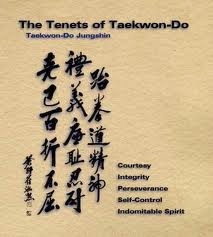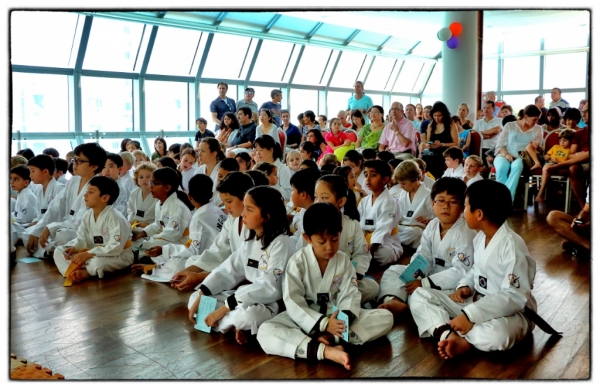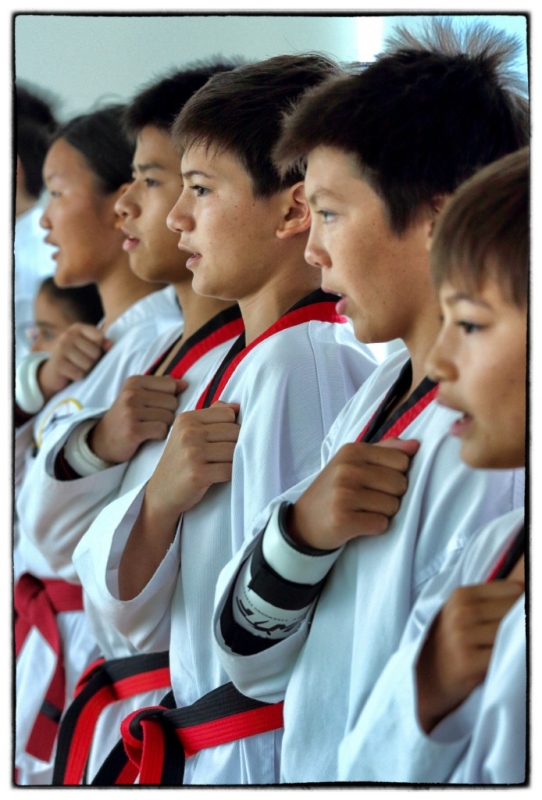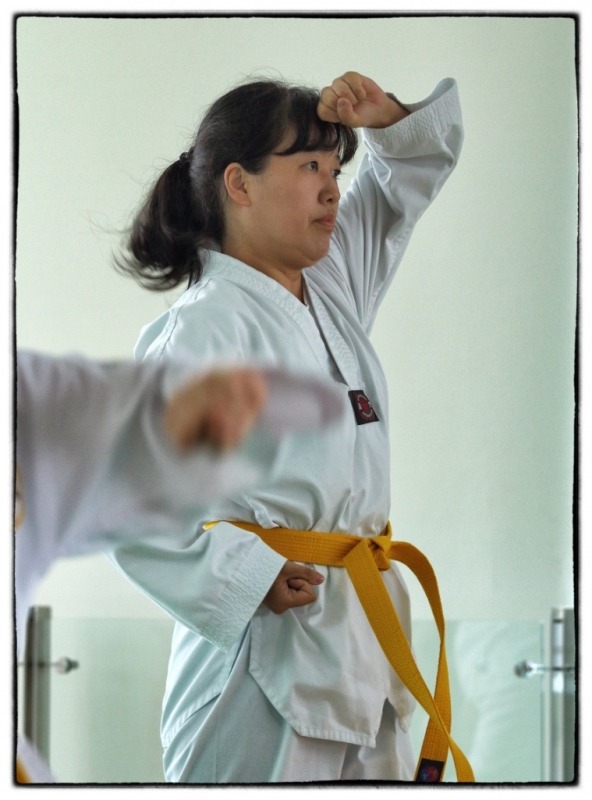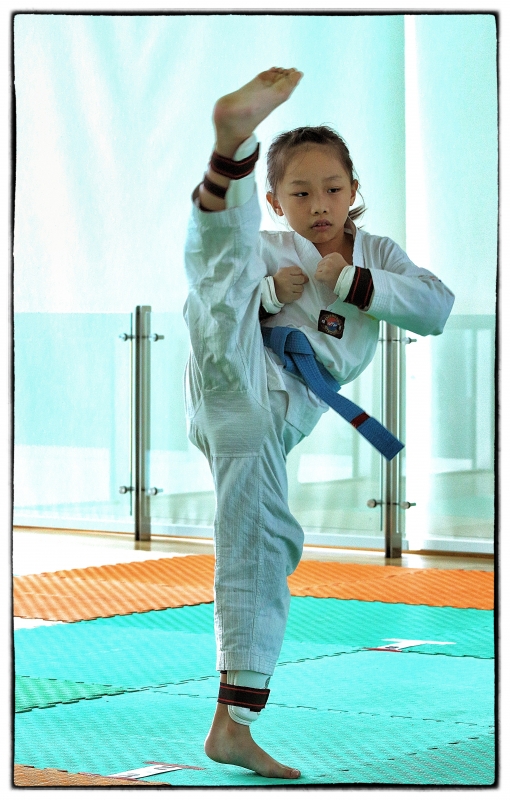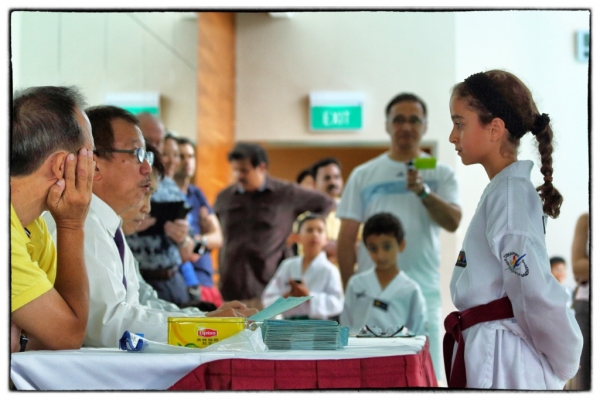
My taekwondo club – Yi Dojang, just concluded our latest quarterly grading exercise last Saturday. As usual, it was a busy affair with everyone in the club busy with something to do. The trainees undertaking the grading examination – some confident, some nervous, are all focused on doing well at the grading after having trained hard the previous months.
And their parents all excited and proud to see to watch how their children performed under pressure. And of course, the club instructors and assistants all tied up to ensure the event being successfully conducted.
This triggered some thoughts in my mind, does anyone know The Tenets of Taekwondo? or the meaning behind the colour of the belts ? What goes on during a taekwondo grading? I thought I take this opportunity to share some info, in my personal opinion, one of the most beautiful martial arts in the world. And do be informed that Taekwondo originated from Korea. While Karate is from Japan.
The Tenets of Taekwondo
1. Courtesy (Ye Ui)
Taekwondo students should attempt to be polite to one another and to respect others. Students should address instructors as Sir and to bow to the instructors before and after classes. Turning up early or on time for classes is also an aspect of courtesy.
2. Integrity (Yom Chi)
One who has integrity is able to define what is right or wrong and have the conscience, if wrong, to feel guilt. Taekwondo students should strive to be honest and to live by moral principles.
3. Perseverance (In Nae)
Perseverance means having patience. One of the most important secrets of becoming a leader in Taekwondo is to overcome every difficulty by perseverance. Confucius said,” One who is impatient in trivial matters can seldom achieve success in matters of great importance.”
4. Self-Control (Guk Gi)
Without self-control, a Taekwondo student is just like any fighter in the street. Loss of self-control is disastrous both in sparring and personal affairs. “The term of stronger is the person who wins over oneself rather than someone else”, Lao Tzu.
5. Indomitable Spirit (Baekjul Boolgool)
A true student of Taekwondo will never give up, not even when faced with insurmountable odds. The most difficult goals can be achieved with indomitable spirit.
The Colours of Taekwondo belts and their meaning
White – signifies a birth, or beginning, of a seed. A white belt student is a beginner searching for knowledge of the Art.
Yellow – signifies the first beam of sunlight which shines upon the seed giving it new strength with the beginning of new life. A yellow belt student is given his/her first ray of knowledge, opening his mind, from an instructor.
Green – signifies the growth of the seed as it sprouts from the earth reaching toward the sun and begins to grow into a plant. A green belt student learns to further develop and refine his/her techniques.
Blue – signifies the blue sky as the plant continues to grow toward it. A blue belt student moves up higher in rank just as the plant grows taller. The light feeds the plant so it can continue to grow. The student is fed additional knowledge of the Art in order for his/her body and mind continue to grow and develop.
Red – signifies the red-hot heat of the Sun as the plant continues growing toward it. A red belt student is higher in rank, he/she acquires more detailed knowledge and, just as the plant grows slowly toward the Sun, so the red belt student learns to be more cautious as his/her knowledge and physical abilities increase.
Black – signifies the darkness beyond the Sun. A black belt seeks new knowledge of the Art. As he/she begins to teach others, he/she begins planting new seeds, his/her students, many of which will take root deep into the Art, blossom and grow through the ranks in a never-ending process of self-growth, knowledge, and enlightenment .(Source: Grand Master James S. Benko, Ph.D)
Taekwondo Grading
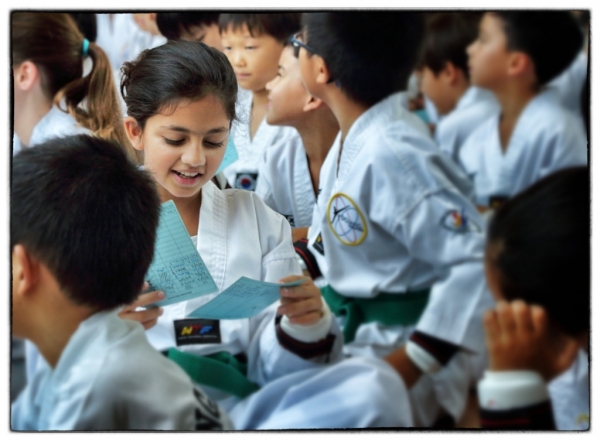 Trainees are issued their grading cards prior the examination and is retained by the club after the grading. So trainees get to see their grading card once every three months. So it’s a happy moment to feel, see and touch your taekwondo “report card”.
Trainees are issued their grading cards prior the examination and is retained by the club after the grading. So trainees get to see their grading card once every three months. So it’s a happy moment to feel, see and touch your taekwondo “report card”.
 Excited parents recording precious moments of their children undergoing the grading…
Excited parents recording precious moments of their children undergoing the grading…
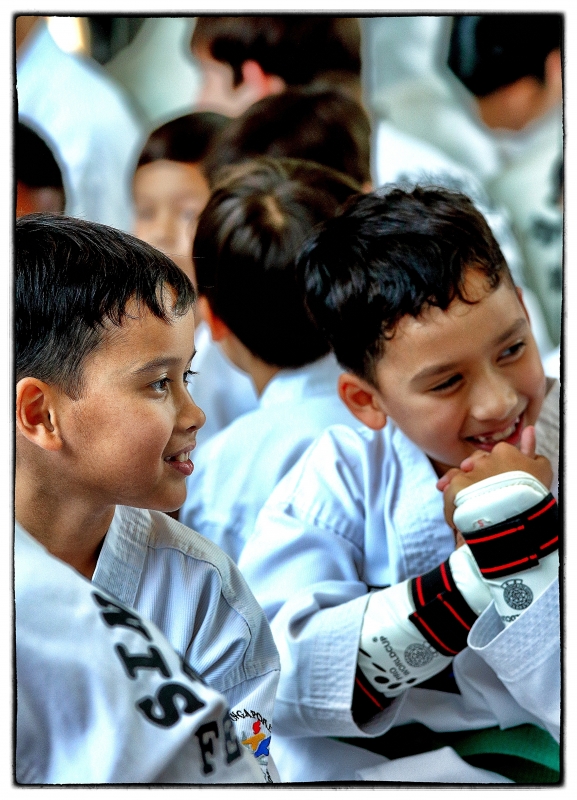 When the trainees have rehearsed and trained well for their grading pattern well, you can see the obvious relaxed mood…
When the trainees have rehearsed and trained well for their grading pattern well, you can see the obvious relaxed mood…
It can be quite a long wait for the warming up, forming up of the trainees and the arrival of the examiner. Smartphone certainly helped parents in kicking the boredom.
Just a small section of the trainees in the grading hall… averagely it takes about 3 hours to complete grading about 100 trainees of various belt levels.
The junior poom belts leading the trainees in taking the Singapore Taekwondo Federation (STF) pledge. The pledge mirrors closely the tenets of taekwondo. Poom belt (Black with red marking) are juniors (age below 16) trainees who attained the black belt level.
A confident and assured countenance are great pluses in a grading. Examiners like this in a trainee. But of course, the required patterns and forms must be good. The ultimate rewards for any trainees taking a grading is a double promotion.
That is, jumping from 1 colour belt to the next. Trainees passing the normal required standards (single promotion) are awarded an intermediate level , i.e White belt to White belt yellow tape (3 months) and White belt yellow tape to Yellow belt (another 3 months). So it takes averagely 3 years to acquire a black belt, the 1st Dan, being the starting point of black belt.
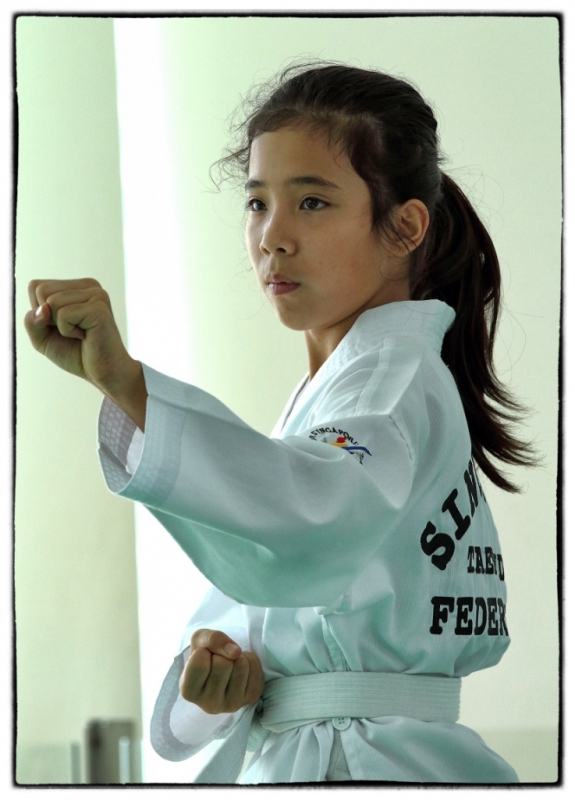 Forms and agility are important criteria in a grading. In taekwondo, trainees have a total of 10 patterns and various kicking techniques from white to black. At the final Brown Belt black tape level just before attaining the black belt, trainees are expected to know all the patterns from blue belt onwards and will be tested on.
Forms and agility are important criteria in a grading. In taekwondo, trainees have a total of 10 patterns and various kicking techniques from white to black. At the final Brown Belt black tape level just before attaining the black belt, trainees are expected to know all the patterns from blue belt onwards and will be tested on.
It pays to be disciplined to revise all every single pattern. As senior belts are expected to assist in sharing and coaching juniors. It’s part of the learning and confidence building cycle.
I especially admired and respect parents who chose to participate in the art alongside their children. Taekwondo is not an “everyday” sporting activity. It’s structured with a development path and involves discipline and commitment. But the journey is an interesting and fulfilling one.
Certainly awesome form ! Great kick from a junior trainee. Perhaps a double promotion ? Double promotion are awarded for trainees who showed excellent form and maturity, especially at the lower belt level like white to green. It’s gets tougher from there onwards.
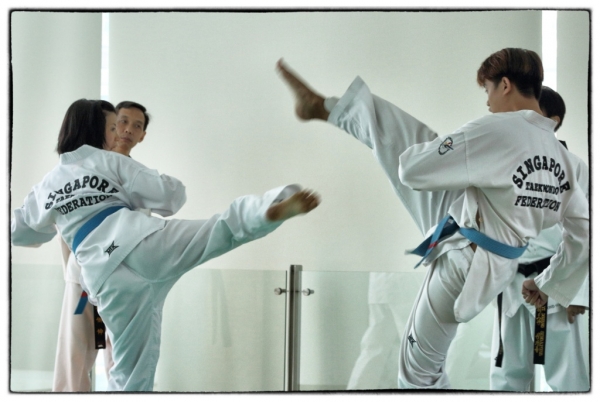 Free sparring is also part of the grading from green belt onward . In consideration of safety guidelines, non-contact is the norm currently. In such session, application of various techniques are required. Trainees doing singular kicks patterns are frequently asked to spar an additional bout.
Free sparring is also part of the grading from green belt onward . In consideration of safety guidelines, non-contact is the norm currently. In such session, application of various techniques are required. Trainees doing singular kicks patterns are frequently asked to spar an additional bout.
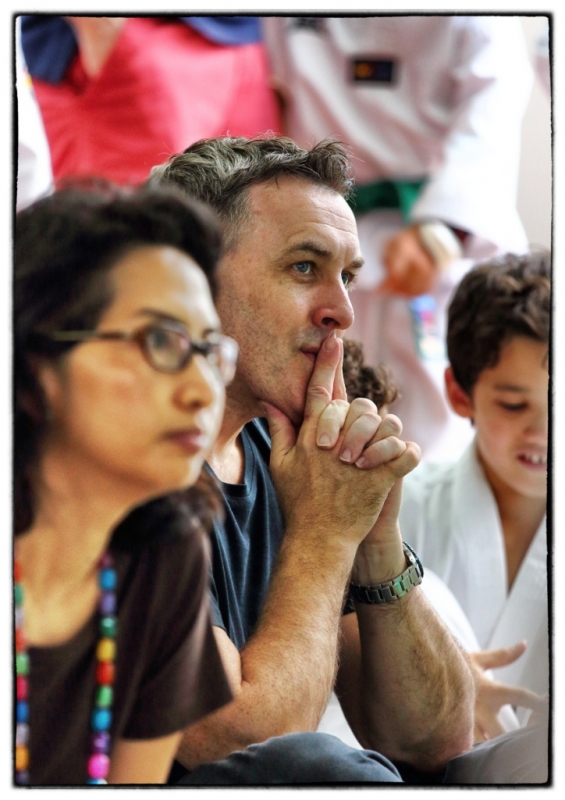 During the grading, the parents are equally excited and nervous. Which parents won’t be ?
During the grading, the parents are equally excited and nervous. Which parents won’t be ?
The examiner communicating his observation and offered direction to an examinee… makes for a really nervous moment. Examiner are assigned on rotation and random basis by the Singapore Taekwondo Federation (STF). Club instructors, however qualified or senior, are disallowed from grading their trainees to avoid conflicts of interest.
Apart from forms, patterns and sparring, trainees vying for black belts are interviewed by the examiner on any kind of topics to assess characters maturity and mindset. Failed this interview, it’s another try again in the future. Character building is just as important, if not more, than physical.
There you go, I hope readers have a better understanding of taekwondo and what goes on during grading. Just for your information, I am an assistant instructor with Yi Dojang (founded by Master Patrick Tan) and hold a 2nd dan black belt and NCAP Coach certification (Level 1). I am also the photographer and club Facebook page administrator.
Thanks for coming along for the ride. (^___^)//.
